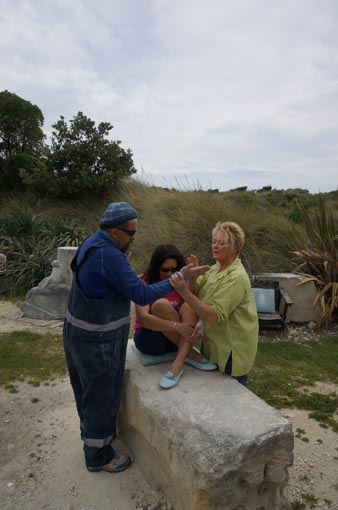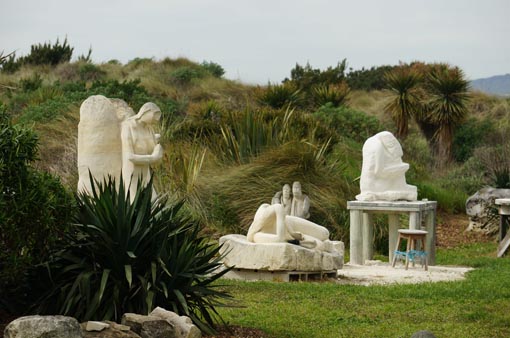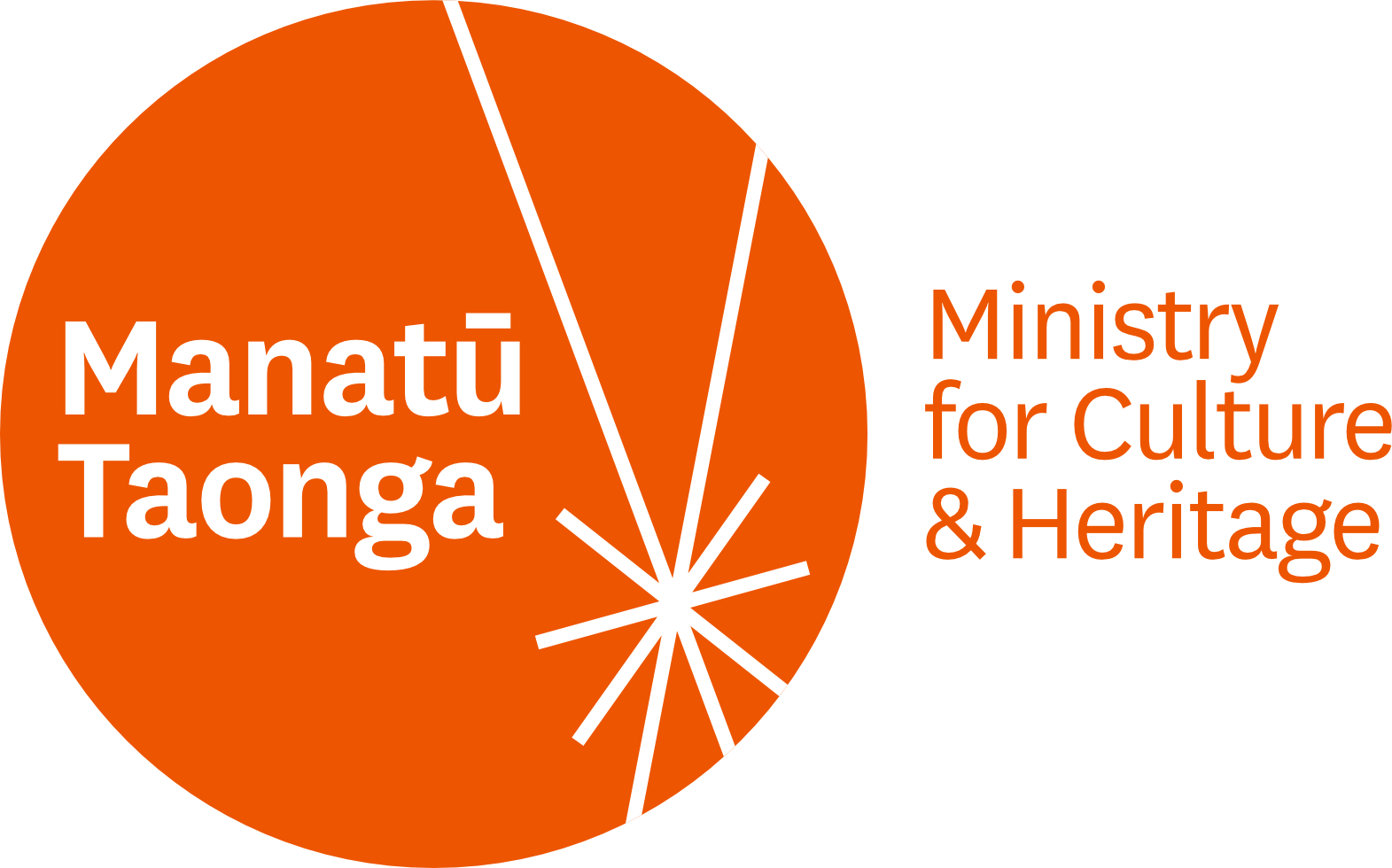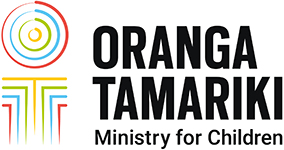Sculptor’s commitment to community
6 January 2014
By Elvina Eugene
Deaf and blind sculptor Donald Gibson is one of hundreds of adults and children in Christchurch to have benefited from the skills and wisdom of award-winning sculptor Bon Suter.
 “When I started working with Donald 20 years ago, we created small clay models,” Bon explains. “But now he prefers to work directly on stone. He has clear ideas in his mind and works at developing those. He particularly enjoys creating the female form but also creates cats, dogs and beautiful, abstract pieces.
“When I started working with Donald 20 years ago, we created small clay models,” Bon explains. “But now he prefers to work directly on stone. He has clear ideas in his mind and works at developing those. He particularly enjoys creating the female form but also creates cats, dogs and beautiful, abstract pieces.
“We communicate through tactile signing. I usually find him models to work with and correct him if he goes wrong.
“I sell some of Donald’s larger pieces for around $3000 and I accompany him to market stores to sell his smaller pieces.”
For Bon, a sculptor for the past 30 years, a highlight of her career has been working with Donald.
 Bon runs sculpture classes and workshops, mainly from her sculpture garden in the Christchurch suburb of South Brighton. Among the participants are disabled or disadvantaged people from various organisations. This includes SkillWise, which works with people with intellectual disability, and Stepping Stone Trust, which provides community support services for people and families affected by mental illness.
Bon runs sculpture classes and workshops, mainly from her sculpture garden in the Christchurch suburb of South Brighton. Among the participants are disabled or disadvantaged people from various organisations. This includes SkillWise, which works with people with intellectual disability, and Stepping Stone Trust, which provides community support services for people and families affected by mental illness.
“I have been working with the disabled community since 1995,” she says. “I love this community and enjoy every minute of my work. Sculpting in stone brings so much joy and a sense of accomplishment to everyone. I am proud to be associated with the amazing art that my students produce.”
Bon says she’s always been involved in the arts, and started sculpting when her children were young and growing up mainly in Christchurch.
Commitment to the community
Her commitment to the community prompted her to set up Te Pani Trust 14 years ago in New Brighton. Te Pani provided studio space, tuition and a gallery for young disabled people, and also for young offenders.
Soon after the 2011 Christchurch earthquake, Te Pani Trust closed its doors.
 Bon says it’s important that the sculptures people make are displayed. “The students at Te Pani Trust used to display their work in its gallery. The sculptures were appreciated by visitors, who often purchased them.
Bon says it’s important that the sculptures people make are displayed. “The students at Te Pani Trust used to display their work in its gallery. The sculptures were appreciated by visitors, who often purchased them.
“These days, I work with my students three times a week in the sculpture garden if the weather permits. On the other days, I focus on my commissions and other pieces.”
A sculpture garden in the dunes
Bon created her sculpture garden 22 years ago on the edge of the sand dunes, opposite her home in South Brighton.
“I’d been on the lookout for a large studio space for my students and me. When I saw the dunes opposite my home, I knew that I had found what I was looking for.”
 Bon approached the Christchurch City Council with her plans. Initially, the council was reluctant to support her but changed its mind once staff met Donald and saw his work.
Bon approached the Christchurch City Council with her plans. Initially, the council was reluctant to support her but changed its mind once staff met Donald and saw his work.
“The sculpture garden is a work in progress,” Bon says. “I’ve been working on it for a long time. The council helps with a bit of the maintenance but I do most of the work.”
Bon has exhibited her work nationally and internationally. Her sculpture recently featured in two Canterbury garden exhibitions, Sculpture On The Peninsula and Art In A Garden. Now, she’s looking forward to exhibiting in a show at Darfield in South Canterbury in August 2014.
In the past, Bon has worked as an arts co-ordinator at the Burwood Hospital, set up the arts programme for Parafed, Canterbury and worked with patients at the Hamilton Hospital to create a large sculpture.
The healing influence of art
Bon says that she has often witnessed the healing influence of art. At Te Pani Trust, for instance, a child with behaviour issues accompanied by two minders, got so involved in working with clay that he would concentrate on one piece for a couple of hours.
Stone sculpture is also therapeutic for disabled people, she says. “They get to work with tools and there is no room for error. It is a slow process that requires them to focus on what they are creating.
“The people I have worked with often end up creating pieces that exceed their expectations. It never fails to instil a sense of pride and accomplishment in them.”
LATEST POSTS
Arts Articles Categories
- Accessibility
- Accessible Arts
- Achievements Celebrations
- Artist My Stories
- Arts Accessibility
- Arts Culture
- Arts Culture Venues
- Arts For All
- Arts In Corrections
- Canterbury Region
- Circus
- Covid 19
- Creative Spaces
- Creative Wellbeing
- Dance
- Maori Art
- Maori Arts
- Mental Health
- Music Sound
- Musical Theatre
- Professional Development Arts
- Staying Connected
- Theatre
- Tikanga Practices
- Visual Arts
- Writing Publishing
- Young People




